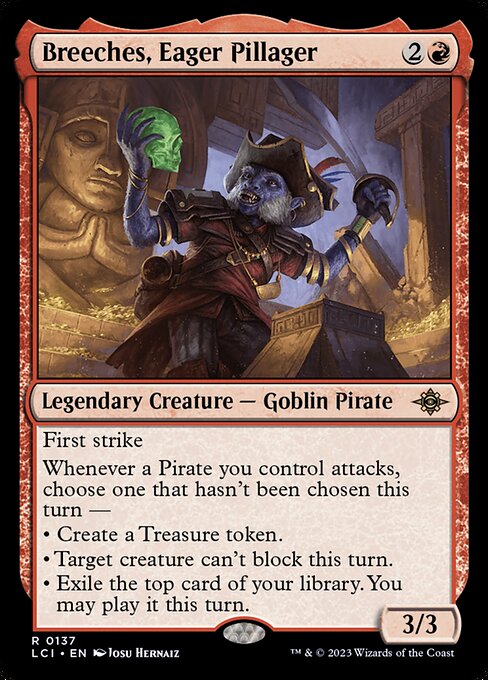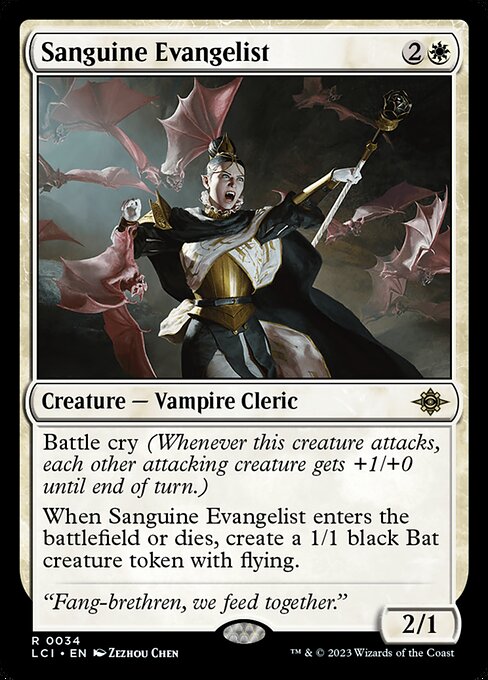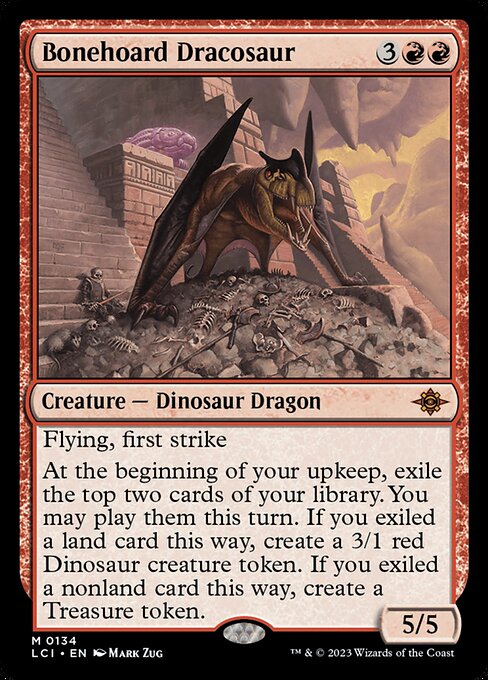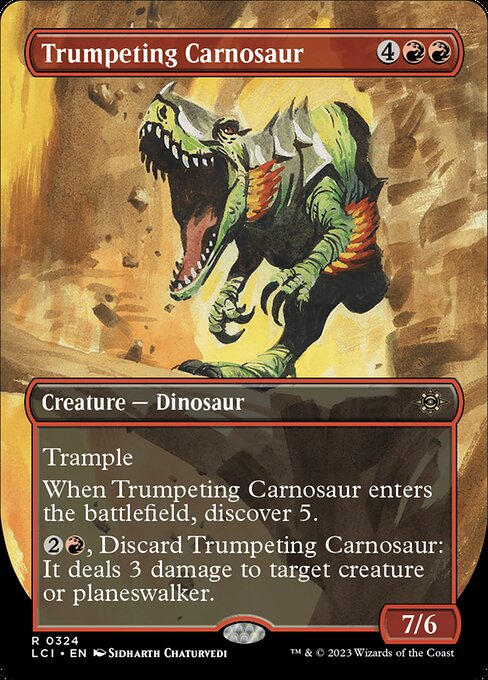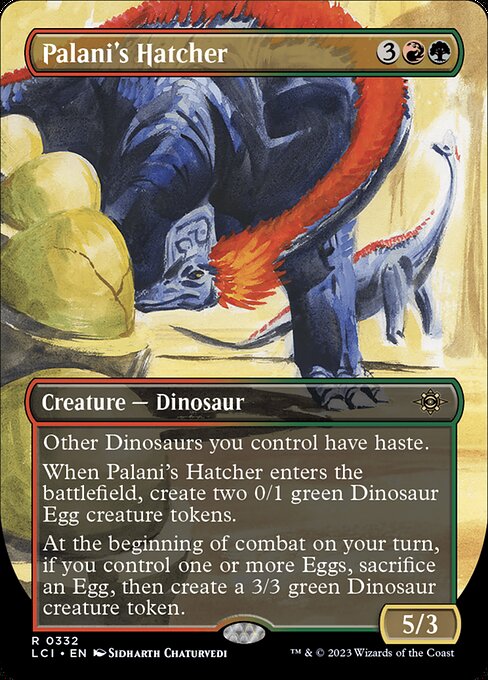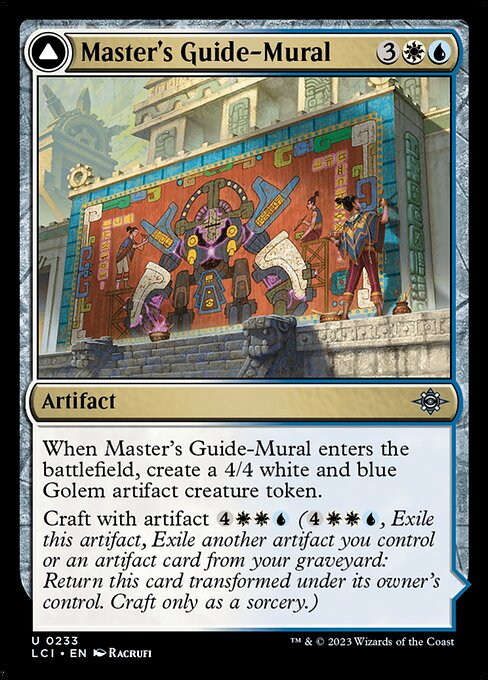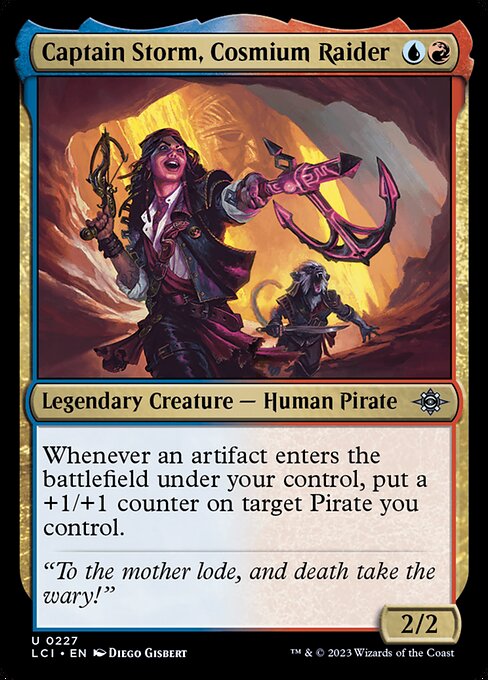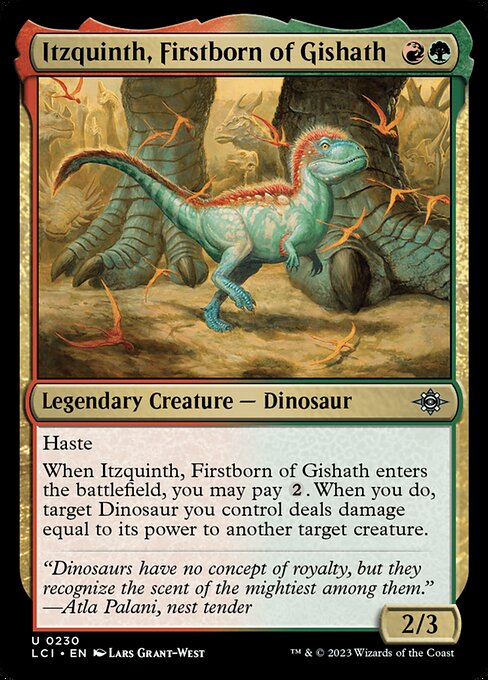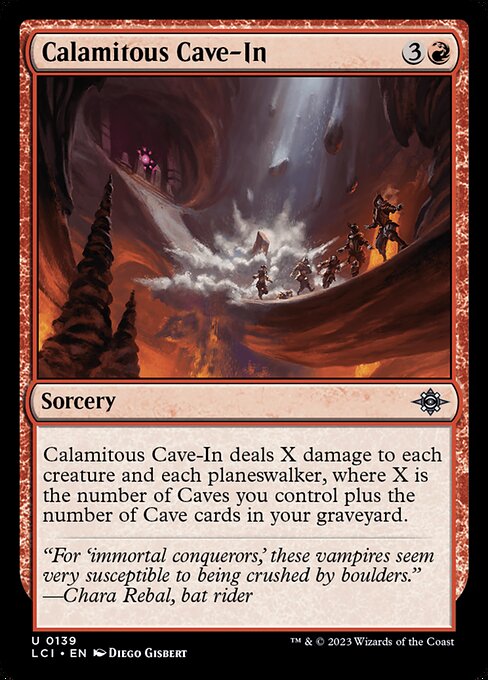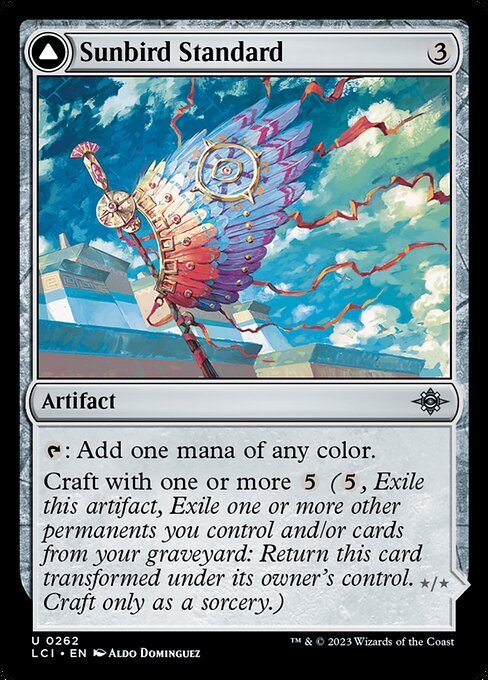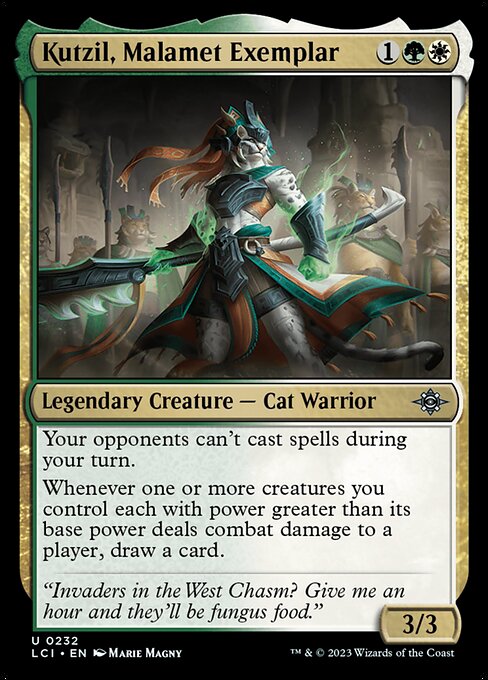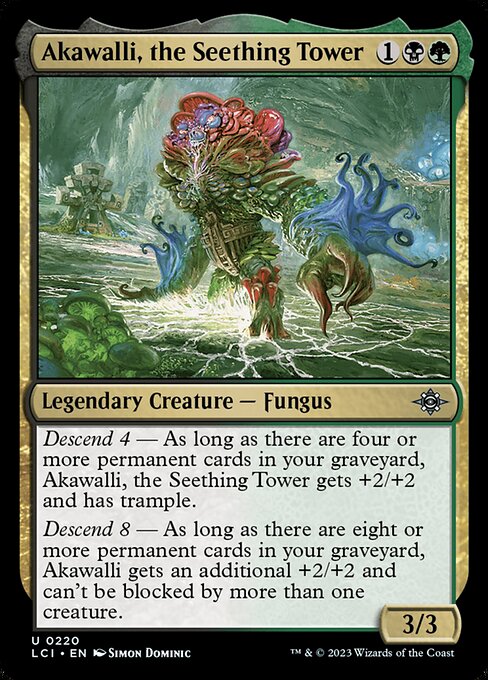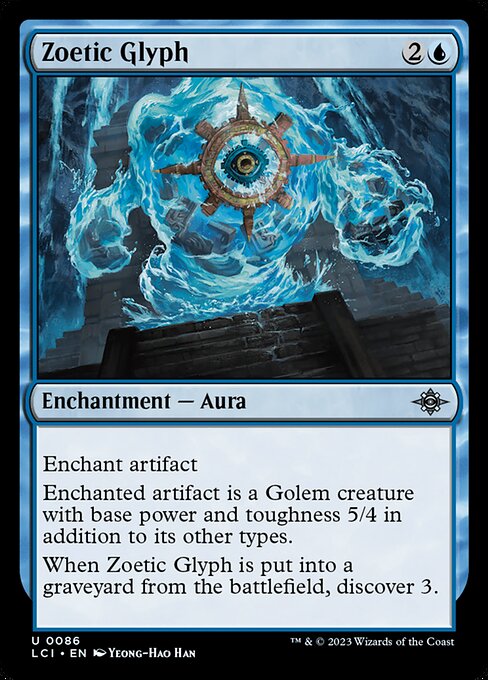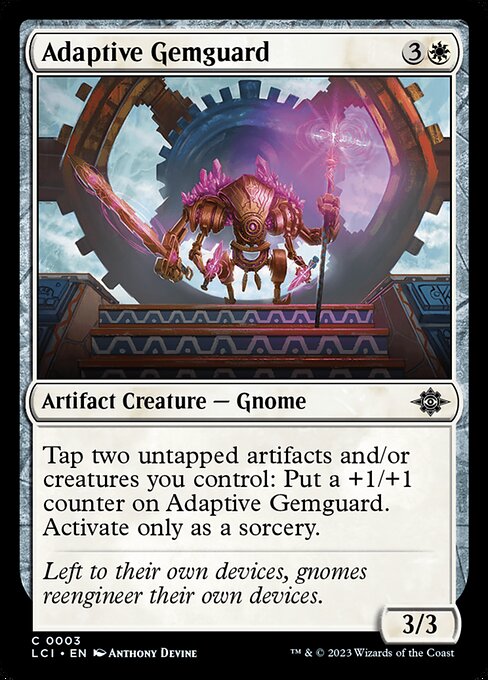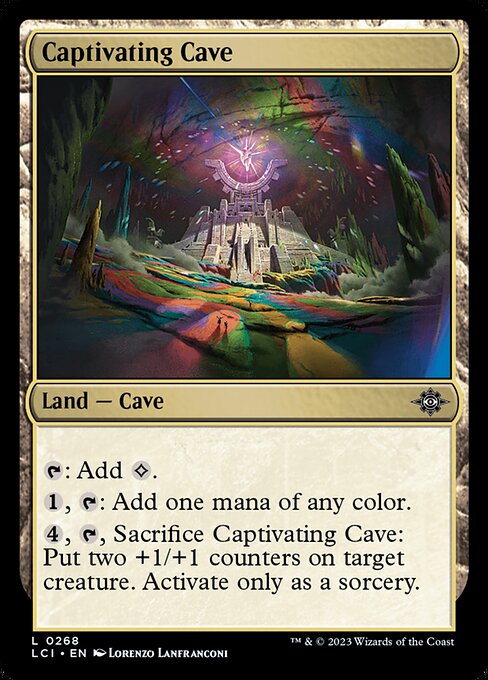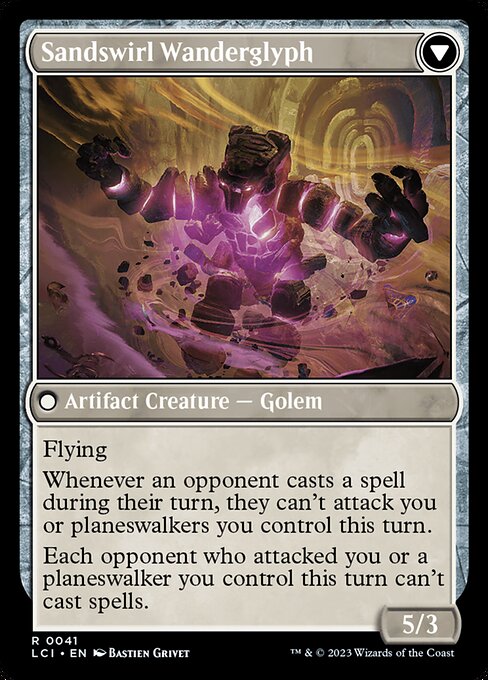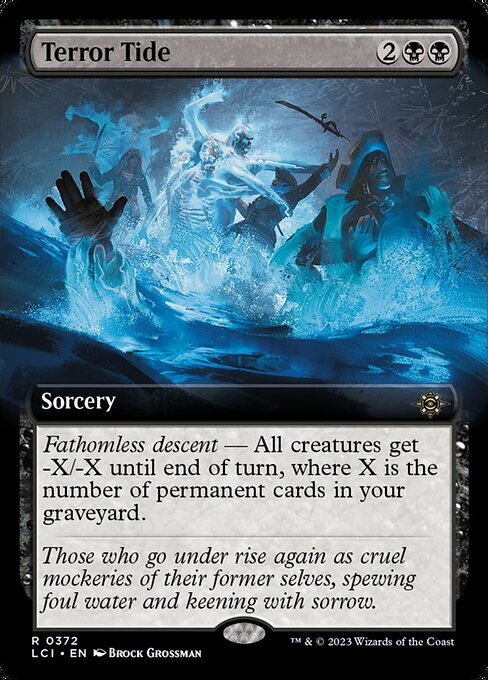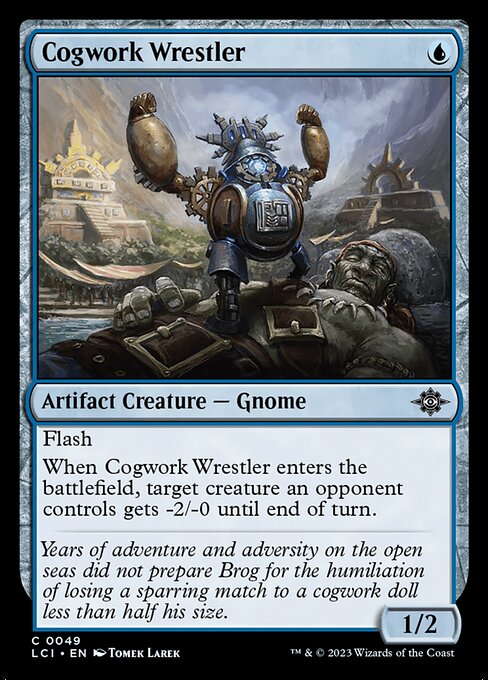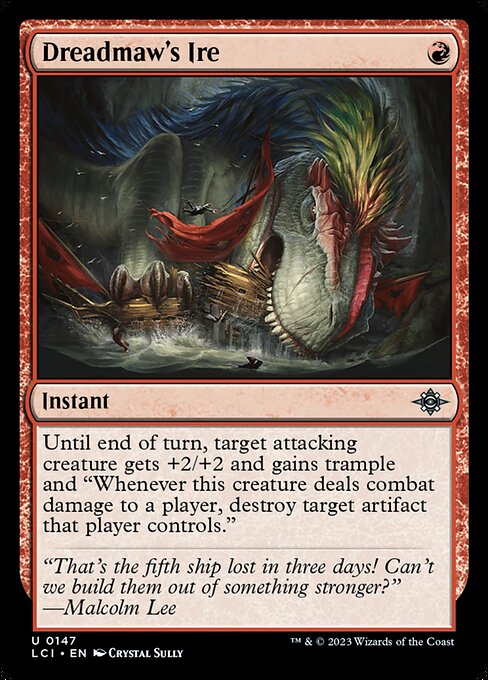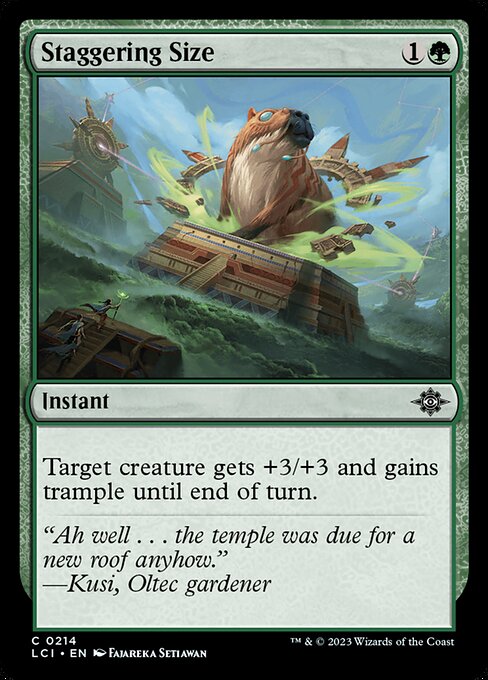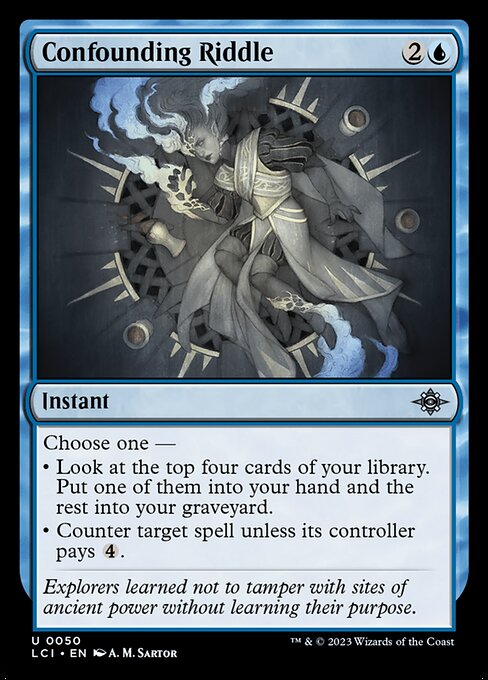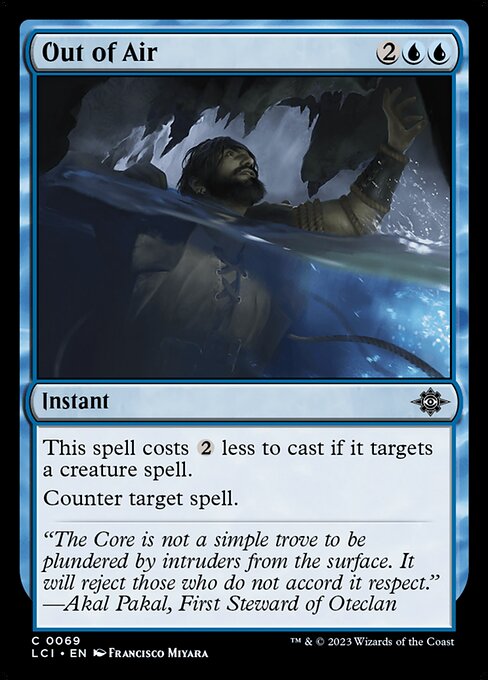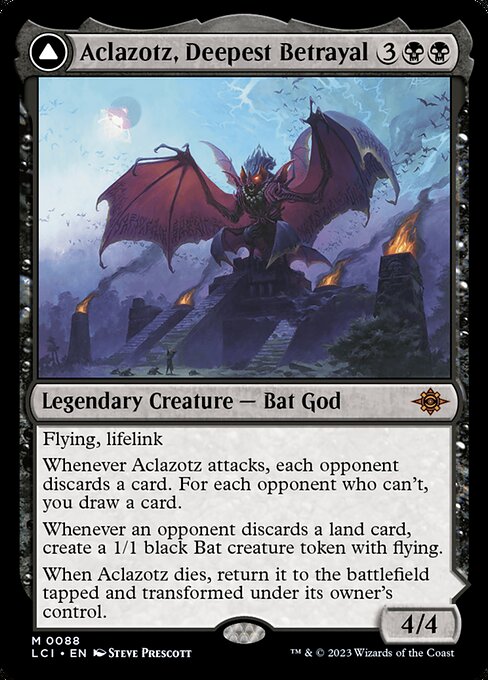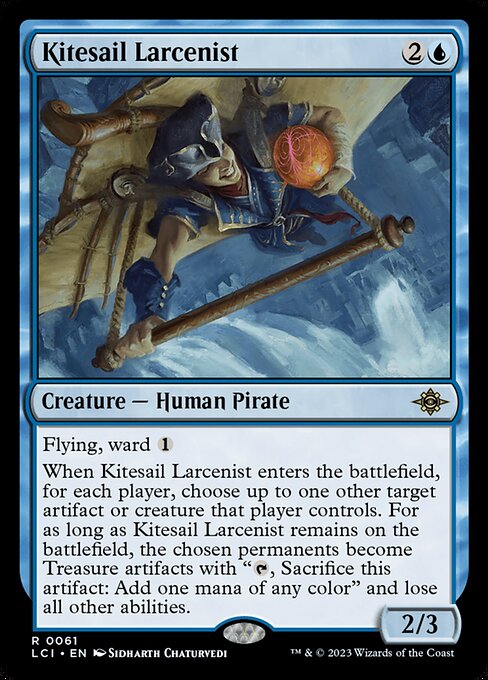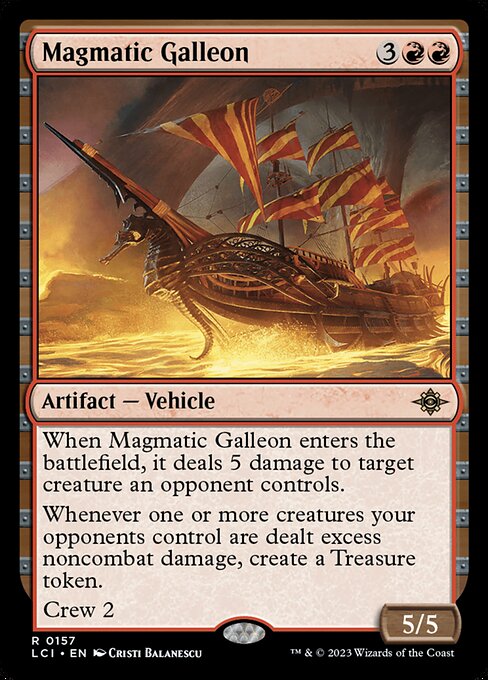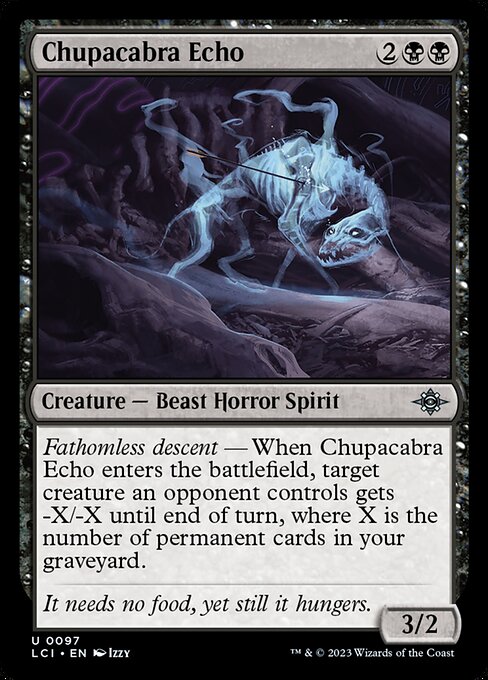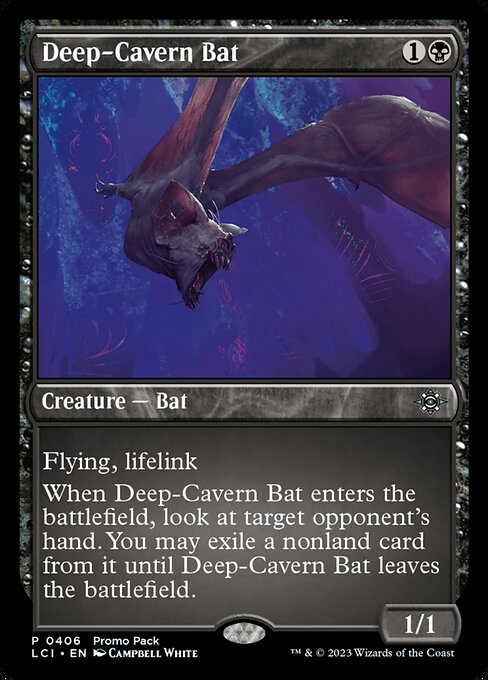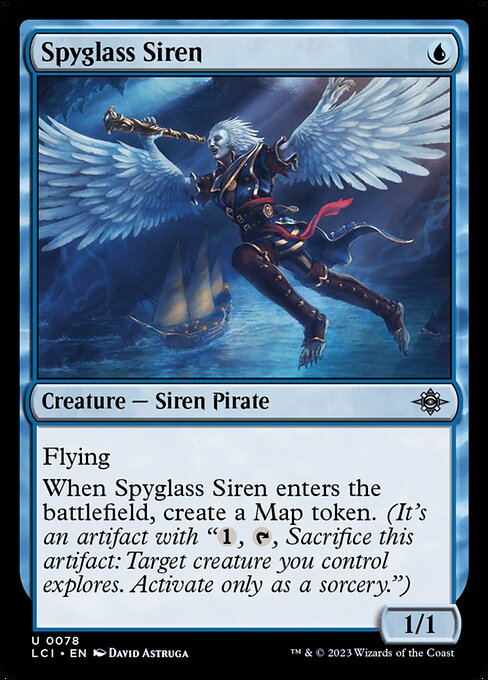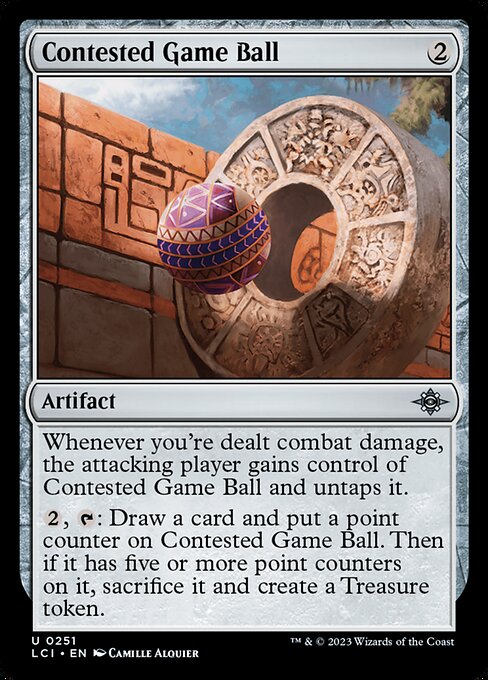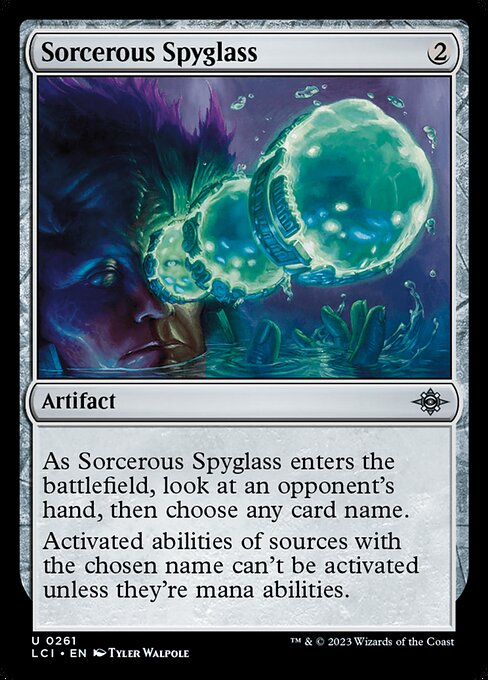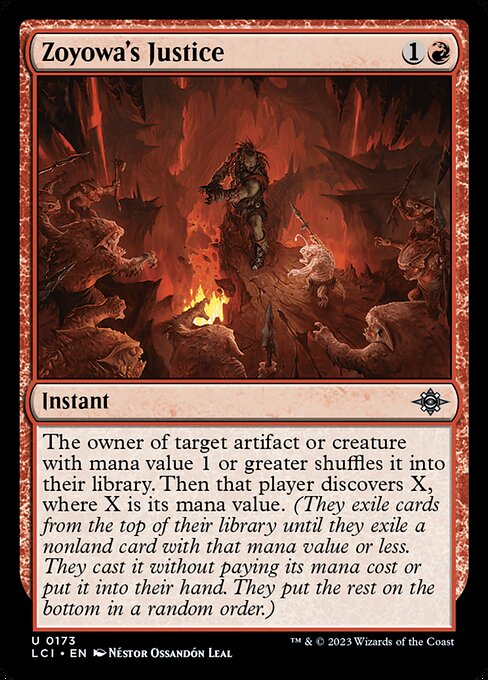Table of Contents
Hey everyone! We’re about to hit the Arena Open for The Lost Caverns of Ixalan so that means it’s time for me to drop my in-depth draft guide. It has certainly been an adventure so far and for a set that’s supposed to involve spelunking, there sure have been a lot of the games that have been determined in the skies. I’ll skip the long introduction and get right to all the info you need to know.
Key Ideas of The Lost Caverns of Ixalan Draft
The first thing we need to talk about is the bombiness of the format. There are an insane number of bombs even if most of them don’t look like your classic busted cards. There are a lot of three mana value cards that just take over a game like Breeches, Eager Pillager. You fall behind so quickly to these cards that you have less of a chance against them then you do the expensive “win the game” cards that you envision when you hear the word bomb.
Granted most of them can be reasonably dealt with if you have the proper removal for them. The aforementioned Breeches can eat an Abrade before it ever has the chance to do anything other than be a Centaur Courser. Bonehoard Dracosaur can be cleanly answered by a Join the Dead and even a god such as Aclazotz, Deepest Betrayal has a problem with Petrify.
This is why having interaction is extremely important for this set. I’ve heard a lot of people talking down removal because all of the cards do something extra while you’re trying to answer them with a one for one spell. That just means that it is less likely that you should be using a removal spell to be mana efficient or for a minor tempo gain. If you don’t give yourself the opportunity to potentially answer your opponent’s haymakers, then you are essentially playing War to see how the cards line up. Removal is very important and you shouldn’t toss it around like it is just another card.
Once you get past the bombs and the ways to answer them, the format becomes very synergy based. This makes the drafts themselves feel very on rails once you’ve established yourself in the proper lane. A lot of the cards are obviously designed to be in certain archetypes so instead of being faced with a decision between three red cards, it will often end up being where you just take the one red card that actually works with the rest of your deck.
The short version is that your baseline strategy should be to take bombs over solid interaction over synergistic cards over generically good cards in your color.
The gameplay itself has been the shining star of the format. There are a ton of microdecisions that pop up that let you feel like you have more agency over the games than you do during the draft. If you find yourself coming up a couple points short from winning a game, you should review it because there is a good shot that you could have done something different to pull it out. As I was saying about the interaction, there are plenty of times where I’ve seen someone toss an Abrade at the first thing it could hit before losing to a late game artifact that they could have dealt with.
Extremely tight technical play with multiple turns thought out ahead will highly benefit you here. Some people might have trouble with the framework of the future turns because of how many small things there are floating around. Take your time, think it through while also placing yourself in your opponent’s shoes and you’ll have a much better idea of where it is actually going to end up.
Format Speed
This format can be extremely fast especially in best of one. As I’m writing this, it actually has a higher win rate on the play than ONE (which was notorious for its number of non-games) while the average game is less than half a turn longer.
The biggest thing to take away from that is how important cheap cards are in this format. That doesn’t necessarily mean that you need to be playing an aggressive deck. It means that even in your control style decks you need to be playing enough cheap cards to get to the point that you can take over.
Archetype Tiers
Some of the most common questions that I get every set are “What’s the best color?” and “What are your color rankings?’. I’ve always found that to be far too reductive and prefer to look at where I rank archetypes instead. Even that is simplifying it a bit too much for my tastes, but it is a good way to step back to look at a big picture view of the format.
Top Tier Archetypes
My top tier of archetypes includes everything from the Jeskai color pie. That should come as no surprise to anyone who has played much of this format. I’ll keep it relatively short about these because it is considered common knowledge at this point.
Azorius comes in two varieties, aggressive flyers and artifacts. You almost always end up with some blending of the two, but you want to be more focused on one end of the spectrum to maximize your chances. Both are pretty equal in effectiveness so you’ll be fine either way.
Izzet is the artifact pirate deck. Once again, you can either play the uber aggressive version that’s coming out of the gates hard and fast with Goblin Tomb Raiders or fall into more of a controlling build. Captain Storm, Cosmium Raider will put in some serious work for either version especially in combination with Cogwork Wrestler.
Boros rounds out the top tier of archetypes. It was designed to be a midrange artifact tapping deck, but I have found the most effective versions to be focusing on aggression with Sunshot Militia as a way to force through the last bit of damage. Since Sunshot Militia is so key to ending games you’re most likely going to have to take it higher than you would for other archetypes.
Second Tier Archetypes
My next tier down is Gruul Dinosaurs and Dimir control.
Seeing Dimir this high up will probably surprise some people, but I’ve found it to be very effective when you are playing it as a control deck instead of focusing on descend. Black has been wide open so you can focus your earlier picks on the top blue cards while being passed embarrassingly late black cards. I saw a Chupacabra Echo wheel the other day, that is about all you need to know about where people are drafting black right now.
You end up with a ton of cards like Dead Weight, Deathcap Marionette, and Tithing Blade that can help you stabilize early. I’ve loved Defossilize as a way to get back whatever your biggest threat is whether it’s a cycled Rampaging Spiketail or a milled bomb. Another Chance has also felt good even if you’re just getting something back like an Echo of Dusk and a Skullcap Snail.
The Gruul Dinosaur deck is pretty straightforward with playing massive dinos and smashing the face in. This is one of the decks that can really crash and burn if you don’t have enough low drops in your deck. Trample is also important to avoid getting stone walled by a couple of Tinker's Totes. Staggering Size is a great way to smash on through along with Etali's Favor.
The funny thing about drafting the dinosaur deck is that it is harder to get into the more casual your table is. A lot of better players will go into the drafts looking to be drafting Jeskai while slightly biased against green and black. That usually means you can start out taking quality red cards and fall back into dinos when the other colors are cut. The more casual players tend to grab up dinosaurs early taking away that option, but usually letting you enjoy your Jeskai pie.
Third Tier Archetypes
My third tier is Cave decks and Multicolor Good Stuff.
This is where some people are like “whhhhhhhaaaaaatttt?!?!?!”. I can assure you that despite all of the jokes/memes, a wide-open caves deck can actually be very powerful. They are a bit slower than the higher tier of decks because of all of the tapped lands. You just need to be at the table where the right cards are opened and no one else is in it.
The blueprint for drafting one of the best versions of caves is to scoop up generic good cards with your early picks (think Abrade or Spyglass Siren type picks) followed by the caves themselves with your midpicks and cleaning up the caves payoffs on the wheel. Following this design lets you remain competitive in the early game with a high ceiling in the endgame that didn’t cost you premium picks.
The big key is Calamitous Cave-In because having access to one or more sweepers that you didn’t have to invest high picks into can really put you in an advantageous position.
The Multicolor Good Stuff decks are where everything’s made up and the mana doesn’t matter. They are usually either rocking some green fixing or Sunbird Standard to help enable playing all of the busted cards you see. Obviously, the mana adds some extra variance, but the power level can certainly be worth it. You still want to be focused on one or two colors, but splashing some five-color nonsense is fine.
Lowest Tier Archetypes
My final tier is Selesnya, Golgari Descend, Rakdos, Orzhov, and Simic Explore.
I’m not a fan of putting such a large group into one tier, but ended up here after discussing it with the rest of the Draft Lab. We all had differing opinions on how to break it into two low tiers with the consensus being that I’d rather not be in any of them unless it is the obviously open lane.
I’m not saying to avoid these archetypes as they can all be successful under the right circumstances. I’ve trophied with all of them and seen lots of very busted versions of each of them. I’m mostly saying that you shouldn’t go into a draft looking to jump into any of them. You should let them happen when it’s obviously right and you’ll be fine. Even then, you might want to look into the possibility of leaning into the multicolor decks that are still taking advantage of these particular colors being open.
Tips and Tricks
For the love of all that is holy (or unholy depending on your preference), stop passing Zoetic Glyph late. I keep seeing it after pick five and there is no real excuse for that.
Your particular build is going to heavily influence which cards you want to be in your deck. A great example is Adaptive Gemguard. Sierkovitz recently showed that the data revealed that it was a trap in Boros decks, but that changes if you are packing a bunch of Tinker's Totes where it can get really hefty.
While true of most modern formats, this one rewards you for creating multiple game pieces. It’s great whether it is providing more things to tap for a trigger or just additional options to find the right line.
It’s fine having one or two of the discover lands (Hidden Courtyard, etc..) even in your two-color aggressive decks as a fall back if you run out of gas.
I’ve also really liked having a Captivating Cave when I’m playing multicolor madness. It’s functions as a rainbow fixer that can be searched up with Scampering Surveyor or Compass Gnome since it is a cave.
I wouldn’t recommend cutting a land just because you have a landcycler. Missing your land drops can be a death sentence in this format. If you have a couple landcyclers or one with a Compass Gnome, then you can consider cutting a land. I don’t ever want to be cutting two lands because two mana is too expensive to actively want to be land cycling. It’s more of a fall back than a part of the plan.
I know everyone is losing their minds over Etali's Favor. It’s important to make sure that you will have enough low drops to play it on. Staring at two of them in your hand while your first creature comes down on turn four is certainly not where you want to be.
Sometimes you are at a huge disadvantage in a matchup because your removal doesn’t lineup well with their threats. An example is that I had a triple Abrade deck that didn’t trophy because all of its losses were to big dinosaurs. My take away wasn’t that Abrade was worse than I expected (it was still great in all of my wins against the much more common Jeskai piles), but that matchup variance can be a very big part of this format. My point is to avoid making a big shift in your card evaluations because you happened to get paired against bad matchups in a singular draft.
Mineshaft Spider might seem like a classic “that card would have been good ten years ago”, but it’s been playing much better than expected. While you would prefer to get some value out of the mill, just having a 3/4 reach can put a halt to a lot of decks main game plan.
Both Cosmium Blast and Spring-Loaded Sawblades are real concerns against white decks. My main reason of bringing this up is that you should consider not attacking with a key card such as Sunshot Militia. It’s not really worth that one point when you’d potentially be losing one of the most important cards in your deck. If you suspect the Spring-Loaded Sawblades, you can tap everything except the Sunshot Militia every turn to avoid playing into it.
One final thing about removal. Just because they already got value out of something doesn’t mean that you shouldn’t remove it. Does it feel great to Abrade a Clay-Fired Bricks after they gained a couple of life and drew a card? Not really, but it feels a lot better than letting them get a Glorious Anthem and two more creatures.
Sweepers
Unstable Glyphbridge is a pretty absurd card and the big sweeper to worry about. One of the small things you can do against it is to move your equipment around to make it so they have to choose a better two power creature for you to keep.
Terror Tide is another potential full board sweeper, but I’ve found it to be way less reliable than I prefer. It’s hard to set it up for turn four or five without making some kind of actual investment into building your graveyard. Even late in the game, it might not hit some of the big old dinosaurs hanging around. It can also be nerfed pretty hard by graveyard hate. I mostly want it if I am playing Dimir control.
As I was discussing up in the archetypes section, Calamitous Cave-In can be extremely busted if you have a critical mass of caves. If you see your opponent piling them up, you want to keep this in mind to ensure that you don’t get caught in the cave-in.
Malicious Eclipse and Tectonic Hazard have mostly been sideboard cards. I could see Malicious Eclipse getting ran in the main sometimes, but I wouldn’t recommend going too far out of your way to play around it other than playing something with three toughness over a couple of 1/1s in a situation that looked suspicious.
Combat Tricks
Oddly enough Cogwork Wrestler is probably the most important combat trick to play around in this set. If they have instant speed priority with one blue up, it is almost always going to be this. I can casually mention Relic's Roar here as a possibility, but that is very rarely ever going to happen. The wrestler can be a real problem because it can wreck a combat, give them an artifact trigger (possibly winning another combat with Captain Storm, Cosmium Raider), and give them another body on the field. That is a ton of possibilities for one mana so you’ll want to minimize the effect it can have on the game.
Dreadmaw's Ire is another hugely important one to play around because it can swing the game hard for one mana. If they just use it as a Shatter that also Shocks the face, you can usually live with that. It’s a serious problem when it wins a combat and then does that. When you suspect this, there are a lot of situations where you either don’t block or multiblock to avoid that situation from happening.
Staggering Size has been performing admirably well because the trample can really help punch through some of the tough defenses that are set up. It has been one of the key cards in successful green decks. Malamet Scythe is the other green pump trick to look out for, but far less likely than Staggering Size.
I’ve seen Acrobatic Leap out of the sideboard against damage-based removal, but keep it in mind if you see them get priority with one white mana up. Family Reunion isn’t seeing much play, but is something to think about if your opponent is going really wide.
Ancestors' Aid has been popping up mostly in the Izzet pirates deck since it can win a combat and give you an artifact. I’ve also seen it in Boros to give an extra game piece to tap for your Sunshot Militia. Even though it potentially ramps you to bigger creatures in Gruul, Staggering Size feels much better in that deck.
Fungal Fortitude is something to worry about if they have Skullcap Snail or another ETB creature. It can get pretty messy if you let them resolve this on a Chupacabra Echo.
Counterspells
Confounding Riddle is by far the best Counterspell in the format. The Convolute part will counter almost anything relevant until the late game usually a turn or so longer than expected because of all the tap lands running around. If they didn’t play anything you can still use your mana to Impulse up a new card and dump the rest into your graveyard to up your Descend count.
Hurl into History feels almost unplayable in the mainboard. I’d bring it in against expensive dinosaur decks or if I see any high mana bombs that I have no other way to deal with.
Out of Air has felt good out of the sideboard, but can also be mainboarded if you’re short on ways to cleanly answer problematic cards. Be very wary of this when you see them manually tapping to leave two blue mana up.
Bombs
These are the Pack One Pick One (p1p1) no doubt, windmill slam, just take them rares of the set. These are not in rank order, just take these over any non-mythic uncommon or common. There are plenty more easy first pick ones, but I only have so much room in this article.
- Aclazotz, Deepest Betrayal
- Bonehoard Dracosaur
- Breeches, Eager Pillager
- Kitesail Larcenist
- Magmatic Galleon
- Palani's Hatcher
- Sanguine Evangelist
- Sentinel of the Nameless City
- Trumpeting Carnosaur
- Unstable Glyphbridge
Mythic Uncommons
These might be uncommons, but they sure don’t play like they are.
Do Not Draft List
These are the cards that you really shouldn’t try to talk yourself into. Just let them live peacefully in the sideboard (preferably someone elses).
Wrap Up
Thanks for reading! Hopefully this provides you with all the information you need about LCI limited. Good luck with crushing the Arena Open this weekend! I’ll be back early next week with your MWM hookup. Until then, stay classy people!
I’m always open to feedback, let me know what you loved, what you hated, or just send dog pics. You can contact me at:
Premium >
Enjoy our content? Wish to support our work? Join our Premium community, get access to exclusive content, remove all advertisements, and more!
- No ads: Browse the entire website ad-free, both display and video.
- Exclusive Content: Instant access to all exclusive articles only for Premium members, at your fingertips.
- Support: All your contributions get directly reinvested into the website to increase your viewing experience!
- Discord: Join our Discord server, claim your Premium role and gain access to exclusive channels where you can learn in real time!
- Special offer: For a limited time, use coupon code L95WR9JOWV to get 50% off the Annual plan!


























